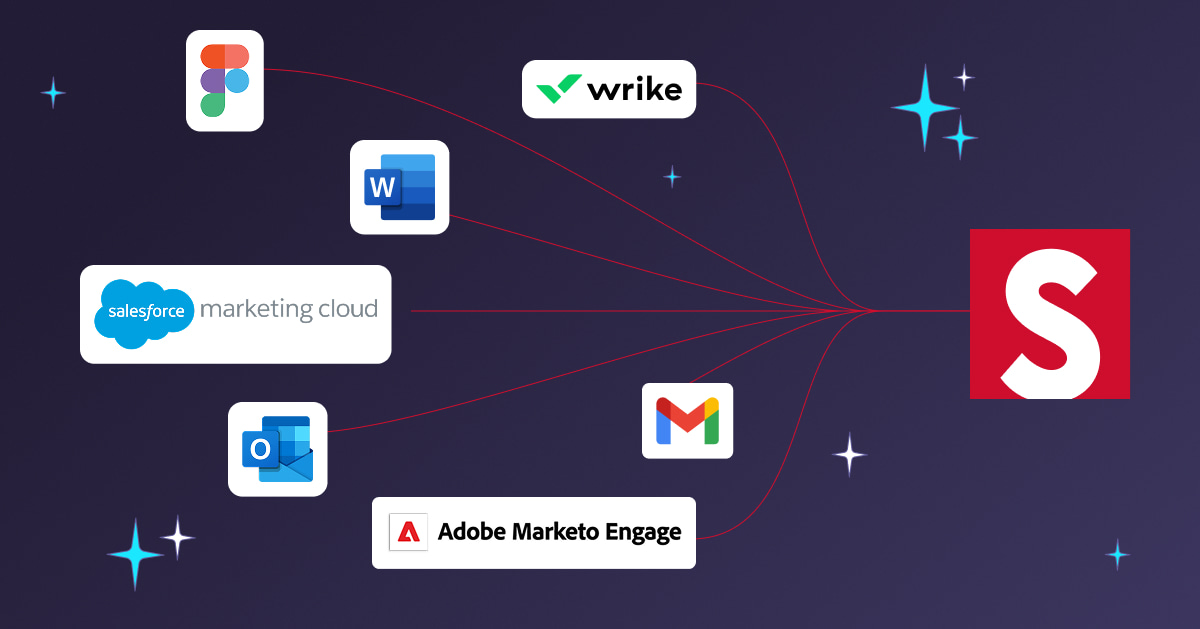Freedom in an email creation framework provides a balance between autonomy (freedom) and control (framework). When that balance exists, the benefit is visible at each step of the email creation process. That overarching benefit is efficiency.
Email request
Instead of a marketer producing an email brief that details every aspect of the email, the framework effectively does away with the multipage document. The marketer can work directly with the creative team—or independently—to develop a concept that shows what they have in mind.
The framework gives the marketer the freedom to bring to life the vision for the email while operating within the parameters of what the organization defines as email best practices.
Design
The balance between control and autonomy is most apparent in the design phase of email creation.
Without a framework, you have what amounts to design anarchy. Creators will do what they want. Their output will be what you’d expect from a total absence of control.
Type fonts, color palettes, and the size and length of headlines will be an absolute hodgepodge. And there’s a good chance even the company logo will not be correct.
A framework presents creators with a range of choices that offer a very real level of consistency. But they are not so limiting as to restrict their ability to produce an email that engages and makes an impact on recipients.
If each email looks and feels differently, the chance that you can forge a relationship with your target audience will be extremely low. Evidence suggests that such emails will annoy subscribers, prompting them to opt out.
Without a framework, images selected for emails will likely be too large, slowing load times, if they can even open. If things like that happen, along with improper placement of text over images and not including Alt Text, the emails will not meet accessibility requirements and reduce deliverability performance.
A design framework ensures that emails meet the requirements of the Americans with Disabilities Act (ADA) and Canada’s Accessible Canada Act (ACA). With it, you won’t overlook the nearly 20 million visually impaired Americans, building fans for your brand among them.
Brand
In most companies, there is a corporate branding guideline. It is a framework of what one can and cannot do with respect to the brand and everything connected to it. This framework is closely aligned with the one for design.
This framework does not afford the range of freedom that other elements in an email creation framework might have.
Along with the actual brand mark—and the control that the latest version is used—this framework takes into account what needs to be in the footer to ensure industry and regulatory compliance.
Review and approval
Contributing to the mind-numbing amount of time it takes to get an email out the door is the review and approval process most creation methods force on organizations.
There’s often no rhyme or reason for the process’s flow. Let’s say there’s too much freedom, and not in a good way. There may even be multiple flows that can wreak havoc. To review, an email proof has to be produced by your ESP/MAP and then sent to those who need to see it. But how? That’s where a framework becomes very useful. It controls how the email is reviewed, who can approve it, and more.
The framework for review and approval brings all involved in this crucial stage of email creation together in a single environment where they can comment and correct in real time. Marketers using this framework can see the time to review and approve emails decrease from weeks to hours, if not minutes.
The framework clarifies who’s to do what, when, and how.
Permissioning
A core principle of freedom in a framework is to let those authorized to do something do it as they choose—within reason, of course.
In an email creation framework, permissioning—or authorizing—is an action that occurs from the very start, going back to the email request. Each person is given a role and has a certain amount of flexibility to perform it. In this framework, if you don’t have permission, you can’t perform the task, take the action, whatever it may be, because it won’t allow you to.
This authorization is especially useful during the review and approval process—typically involving the marketer, the creative team, a legal or compliance team, and an executive sponsor. If you do not have permission, you cannot upload an email to your deployment platform.
Importantly, if you don’t have permission to send an email, it can’t happen. The framework prevents the embarrassing unintended send.
To learn more, download the Stensul eBook, Freedom in an email creation framework.




